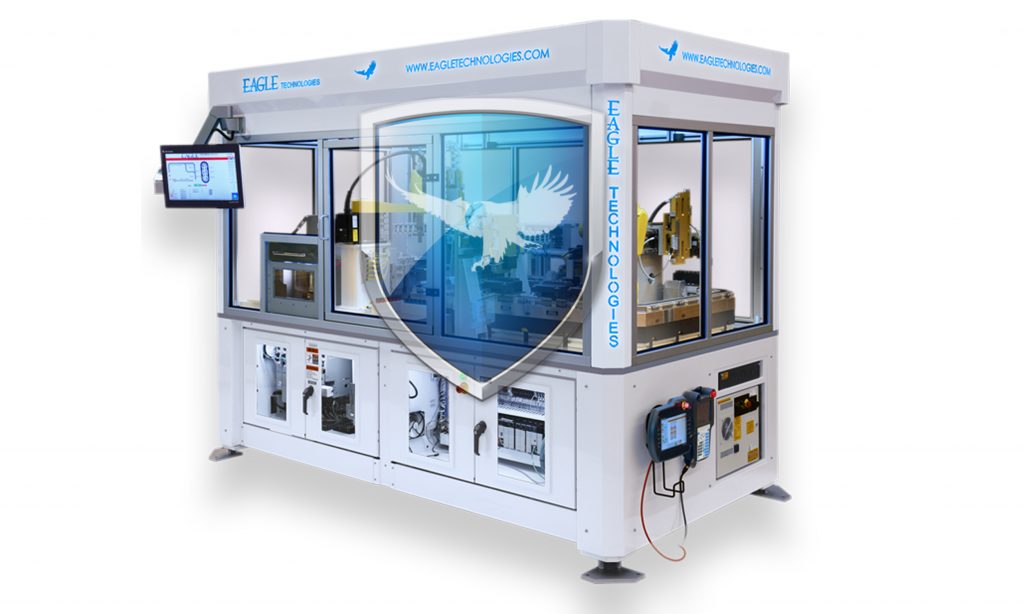As factories grow more digitized and connected, they become more valuable as targets for cyberattacks.
Manufacturing is entering a new era, one marked by high-tech robots, advanced simulation, big data, and internet-equipped smart machines. Each of these innovations brings fresh opportunities for businesses to rethink their assembly processes and discover new ways to manufacture products. However, the widespread adoption of advanced technological systems also introduces security vulnerabilities that some businesses haven’t thought of, and may not be prepared to face.
While cybersecurity threats were once treated as rare and outlandish occurrences, today they have become an all-too-common problem. And as manufacturing companies grow in size, they also become more tempting as potential targets. It is essential that all manufacturers understand the possible threats cyberattacks pose to their business, and what steps they can take to avoid falling victim to them.

How are manufacturers vulnerable to cyberattacks?
Specific kinds of cyberattacks come in many forms. Some make themselves known quickly, by holding a network for ransom, or by consuming so many computing resources that they slow everything down. Others may go undetected for years, quietly collecting data and worming themselves deeper into the system.
The damage these security breaches pose are far-reaching. They may cause millions of dollars in damage in terms of lost data, lost operating time, or ransoms paid. They may also make a company liable if they are found to have been partly responsible for the breach.
- Risks to your business. A cyberattack can shut down factories, causing production delays. It can lock administrators out of systems, or destroy key operating data. Cyberattacks have leaked private internal documents, leading to embarrassment and erosion of trust among coworkers, and they can also reveal critical operating information to competitors. A significant attack can also cause damage to a company’s public image, leading to a loss of trust.
- Risks to your customers. Perhaps the most common consequence of a cyberattack involves stolen data. With factories increasingly leveraging big data to improve production processes, the likelihood that this data is targeted for theft grows. If this data can be linked to customers, it poses a significant legal risk to the manufacturer.
One of the worst scenarios a manufacturer might face is if a cyberattack causes their factory to begin producing defective products. Advanced quality control measures can detect these errors, unless those systems have also been compromised. Defective products that end up in the hands of customers due to a cyberattack can have serious consequences.
- Risks to the public. Recently, the Colonial Pipeline ransomware attack demonstrated how a security vulnerability can have widespread consequences beyond just a business and its customers. A cyberattack that disrupted major manufacturing supply chains could have similarly widespread consequences.
We aren’t here to suggest that every company that falls victim to a cyberattack does so from security negligence. The truth is that achieving the highest standards is difficult, and it is made even more complicated by ever-evolving threats. But it is the responsibility of manufacturers to be proactive in securing their networks and taking all the steps possible to keep their systems safe.
How should manufacturing leaders keep their IIoT investments safe?
Business owners in the manufacturing space have an opportunity to demonstrate their leadership by making cybersecurity a priority in their organization—and they can do so without having to become experts in cybersecurity themselves. Three ways for them to take charge include:
1. Hire cybersecurity experts who are well-versed in industry standards.
Great leaders know to surround themselves with people who are more knowledgeable than they are. When it comes to cybersecurity, hiring professionals who understand industry standards forwards and backwards—and can make recommendations to go above and beyond—is the best way to protect your business.
When working with cybersecurity experts, allow yourself to be guided by their recommendations. The goal isn’t to check a box, but to enact a comprehensive cybersecurity strategy. Make that your mission, and then work with your cybersecurity team to find new ways of achieving it.
2. Take the initiative by educating your employees about cybersecurity best practices.
While some security breaches happen by exploiting vulnerabilities in a network, many cyberattacks are related to human error. These may include weak passwords, downloading a questionable program onto the network, falling victim to a phishing scam, or failing to set up two-factor authentication.
Workers often make mistakes of this nature because they aren’t aware of the risks involved in choosing a poor password or clicking on a bad link. Cyberattacks are also growing increasingly sophisticated, making them harder to detect. Keeping employees up to date regarding cybersecurity best practices can raise their awareness of these issues, and help them avoid common pitfalls.
3. Be proactive in talking with your cybersecurity consultants about ways to improve.
Cybersecurity is a sector where leadership can have a profound impact on the behavior of the rest of the team. Many times, following secure protocols, can make employees feel “silly,” especially as the threat is invisible, and an employee’s actions can seem disconnected from any tangible effect they may have on security.
However, as a leader, following good practices yourself and reinforcing with your team that security standards are a top priority can reduce any embarrassment an employee may feel about strictly following the rules. Cybersecurity standards should be treated with as much rigor and seriousness as quality control standards. In fact, the two are closely related.
Maintaining cybersecurity standards is the next realm of continuous improvement.
Cyber threats are constantly changing, and a company that implements security measures once and then forgets about them will soon find themselves once more at risk. Instead, manufacturers should think of cybersecurity the way they think about quality control: part of a business objective that needs to be regularly iterated, updated, and improved.
In fact, many of the underlying principles to removing quality control errors apply to cybersecurity: eliminate single points of failure, include fail-safes to prevent human error, have systems in place for detecting and eliminating problems early, and make excellence an organizational mission.
Manufacturers who have been successful in achieving quality control standards have only to apply this mindset to cybersecurity to become industry leaders in cybersecurity as well.
Brandon Fuller | b.fuller@EagleTechnologies.com
Eagle Technologies, headquarters in Bridgman, MI
Eagle builds the machines that automate manufacturing. From high-tech robotics to advanced product testing capabilities, Eagle offers end-to-end manufacturing solutions for every industry.


